Gesture drawing
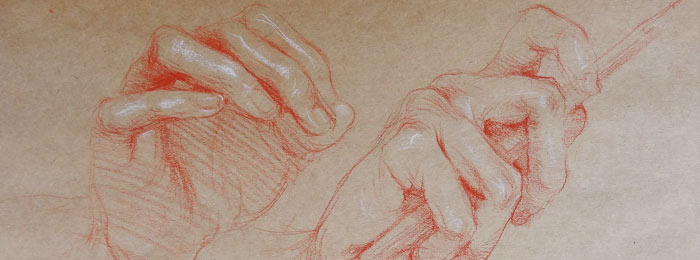
(Featured sketches by Natalie Richy)
Question from Judy
What do you think about the “gesture drawing” practice?
In the past I took a few figure drawing classes with nude models, where hours were devoted to “gesture drawing”, with poses changing every 30 or 60 seconds. The longest poses would last 20 minutes. Do you think “gesture drawing” is a good exercise for the beginners or intermediate students?
Feedback from Vladimir London & Natalie Richy,
Anatomy Master Class tutors
Hi Judy,
Many thanks for your interesting question.
Gesture drawing is a great way to practice sketching skills and train your eye and hand.
The challenge for beginners is not that time is too short, but that the knowledge is not there.
You see, for an advanced fine artist, gesture drawing is a good way to “capture the moment”, depict with flowing lines the complexity of human figure shapes and its pose.
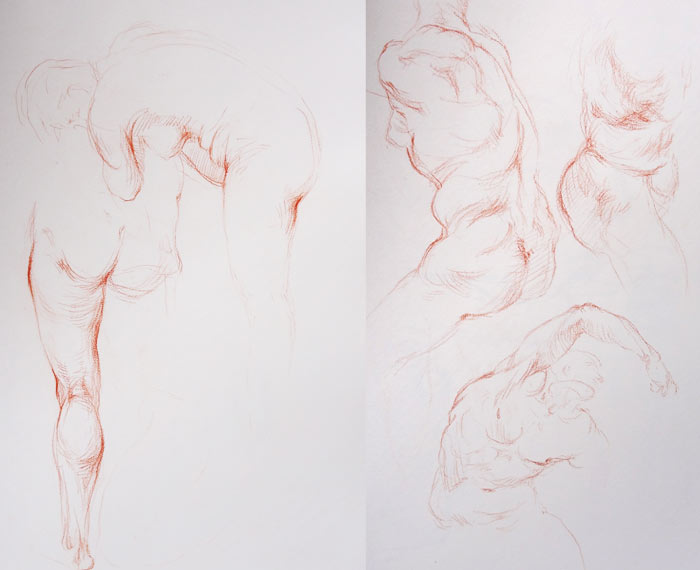
Equipped with understanding of human body anatomy and proportions, such an artist would not think very long about proportions; this information is used subconsciously.
It is like driving a car – if you have enough knowledge and experience, driving is almost happening by itself. An inexperienced driver would concentrate very hard and make mistakes.
For a beginning artist who doesn’t know anatomy well, gesture drawing becomes copying what one sees. Such copying inevitably results in amateur sketches.
Even in short 30 second gesture drawings, a professional artist will draw what one knows about anatomy and the proportions of a human figure.
Just imagine thinking about the following proportions under time pressure: the center of a standing figure is at the pubic bone level, which is where hip joints are; the distance between the toes and the top of the patella is the same as from the patella to the illiac crest and is the same as from the pubis to the suprasternal notch; the height of the face is the same as the length of the hand, or length of the clavicle or the height of the pelvis or the length of the sternum. The flow of the tailor’s muscle, calf muscle and adductors forms the figure “8”; the sternocleidomastoid gives distinct contour to the neck and marks at the top the base of the skull and the base of the nose; flexors and extensors of the arm flow in a spiral movement, etc.
You just spent more that 50 seconds reading the paragraph above and this is just a tiny fraction of various proportions and anatomy facts which an artist must use. By that time, the 30 second sketch is over.
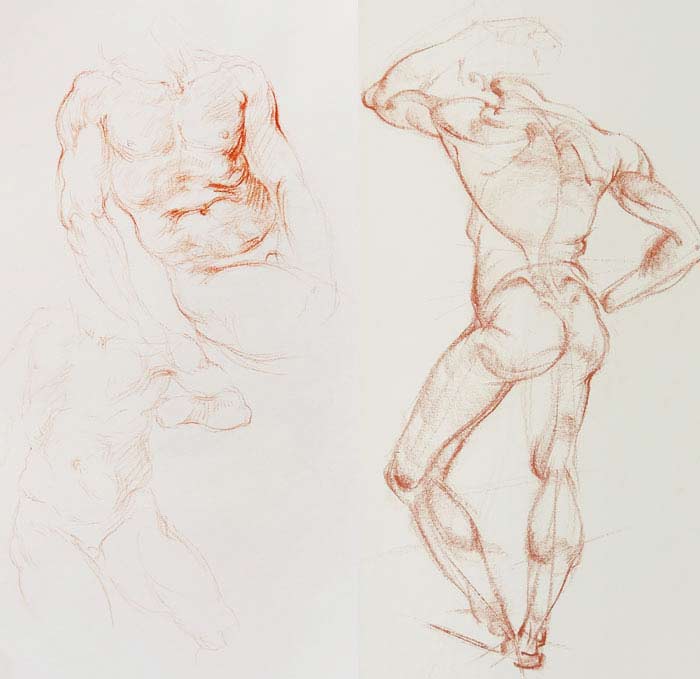
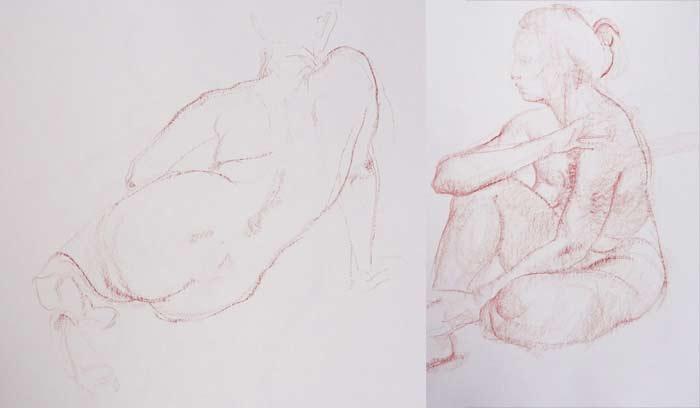
So, the knowledge of proportions and anatomy has to become an automatic skill like driving a car. It comes not from fast gesture sketches, but vice versa, good gesture drawings are the result of necessary knowledge and practice.
The necessary knowledge can be gained in detailed thoughtful studies of what it takes to draw human figures and portraits proficiently.
If an amateur artist would do 100 gesture sketches without proper understanding of human anatomy, he or she would end up with a collection of sketches full of mistakes. If one spent 100 hours in studying proportions, anatomy and constructive ways of drawing figures and portraits, such an artist would be miles ahead of the rest.
So my advice is to learn what it takes to create good drawings, and use this knowledge in fast and long figurative artworks.
By the way, by “long drawings” I mean 20 hours, not 20 minute sketches, which was the longest in your class.
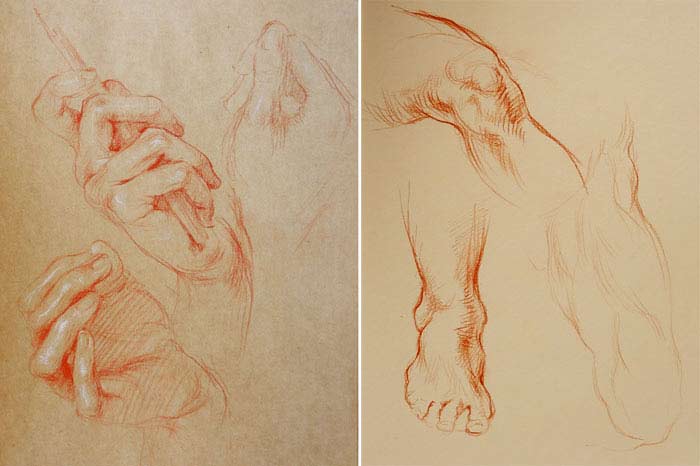
To help students who don’t have much time to learn human anatomy, we have created the Anatomy Master Class video course.
Hi, I am a guest, and I will restrain myself so I am not misconstrued this time. The reply is interesting. I spent four years in a four year accredited school wherein Art was my Major. In those four years there was never an anatomy class and never even the mention of anatomy. The commentator I believe to be accurate in his assessment. I spent some time in the classes with nude models and speed drawing. Our poses were one to two minutes. I never understood them and they never seemed to help me improve. I studied some anatomy on my own but never had any idea on how to connect it all together.
Tom
Learn human body anatomy and proportions quickly and easily
One-time payment - Lifetime Membership
$97 USD




